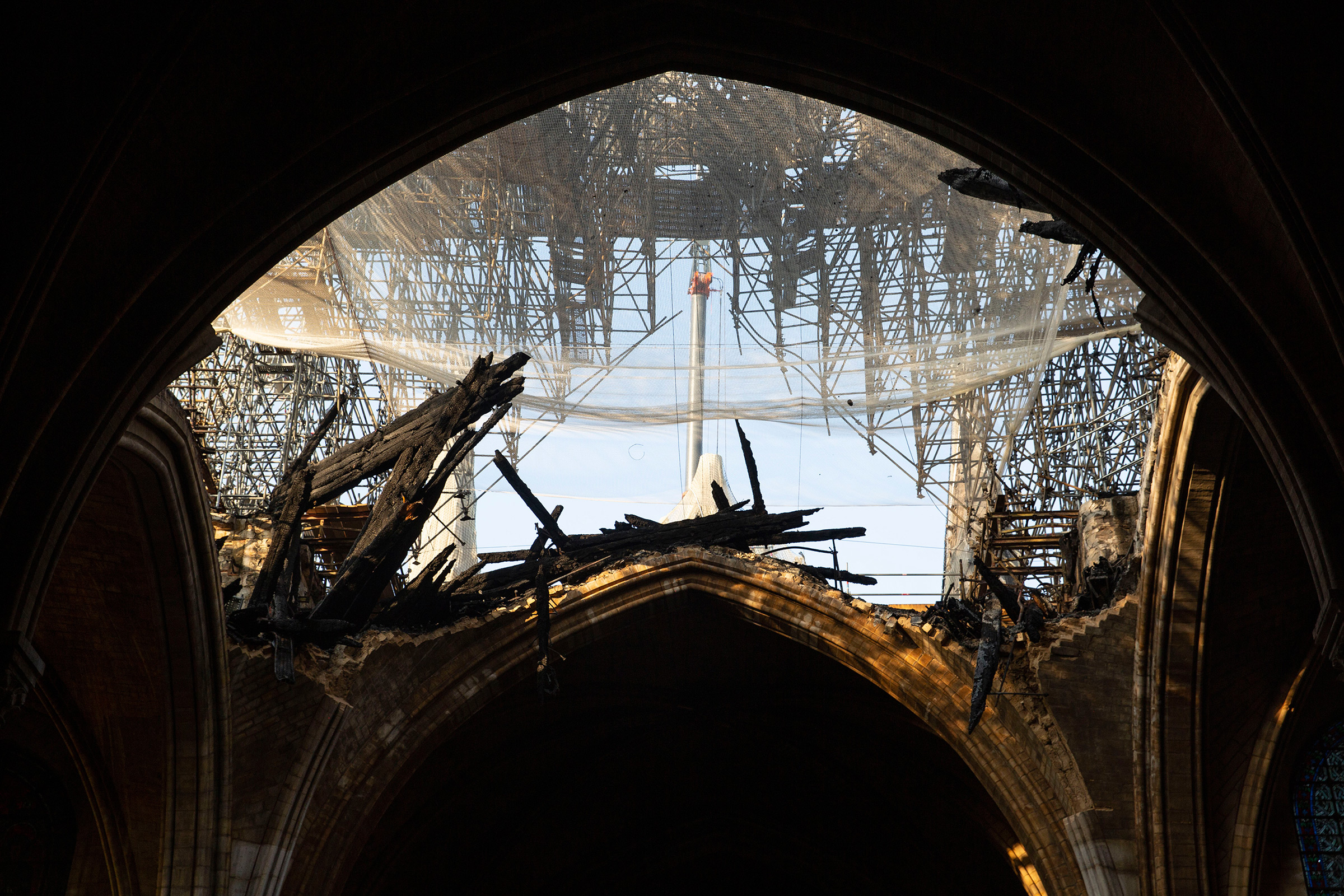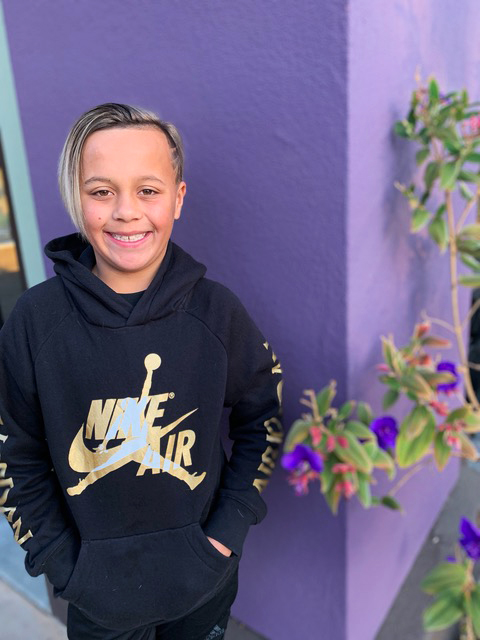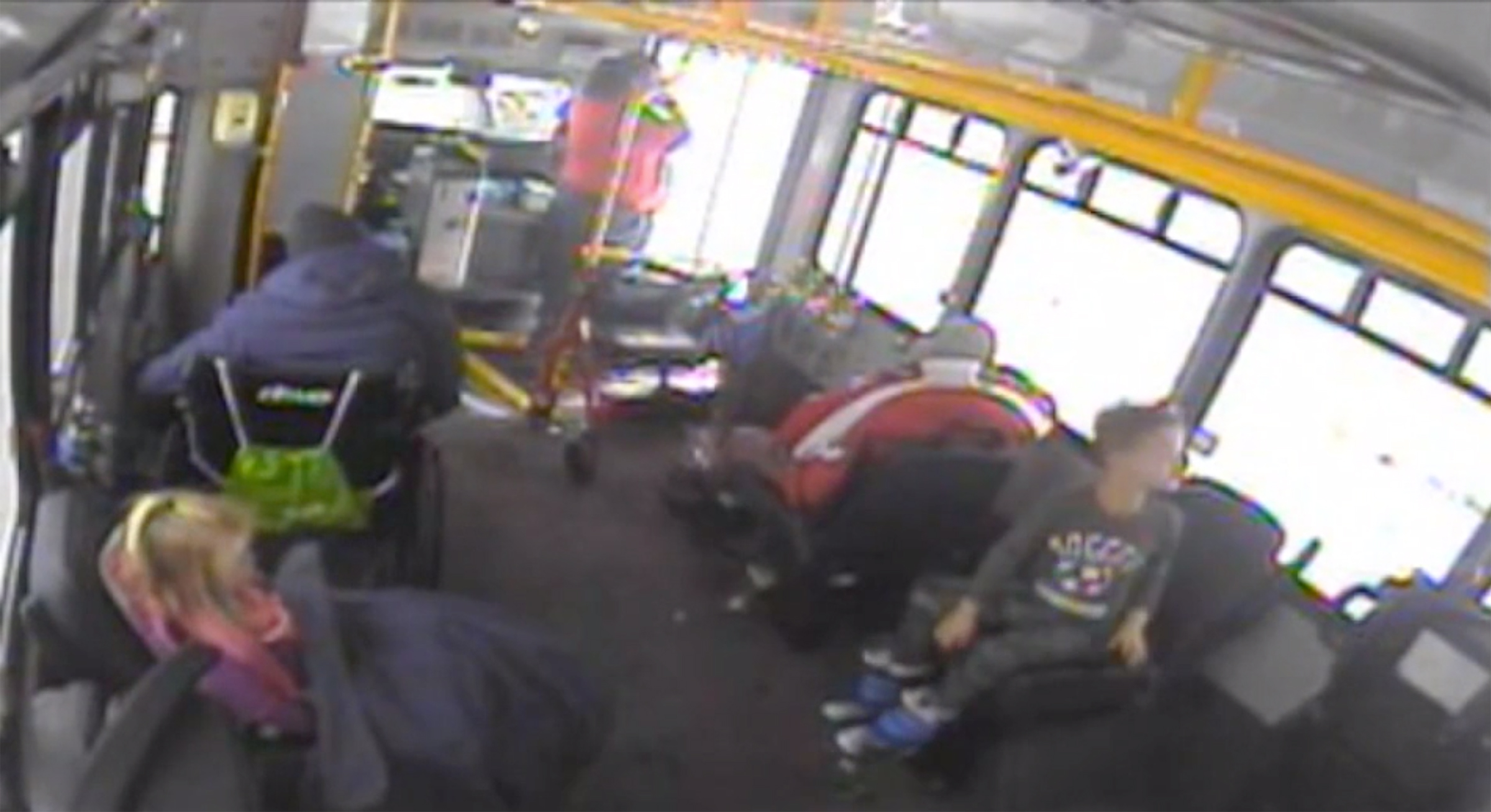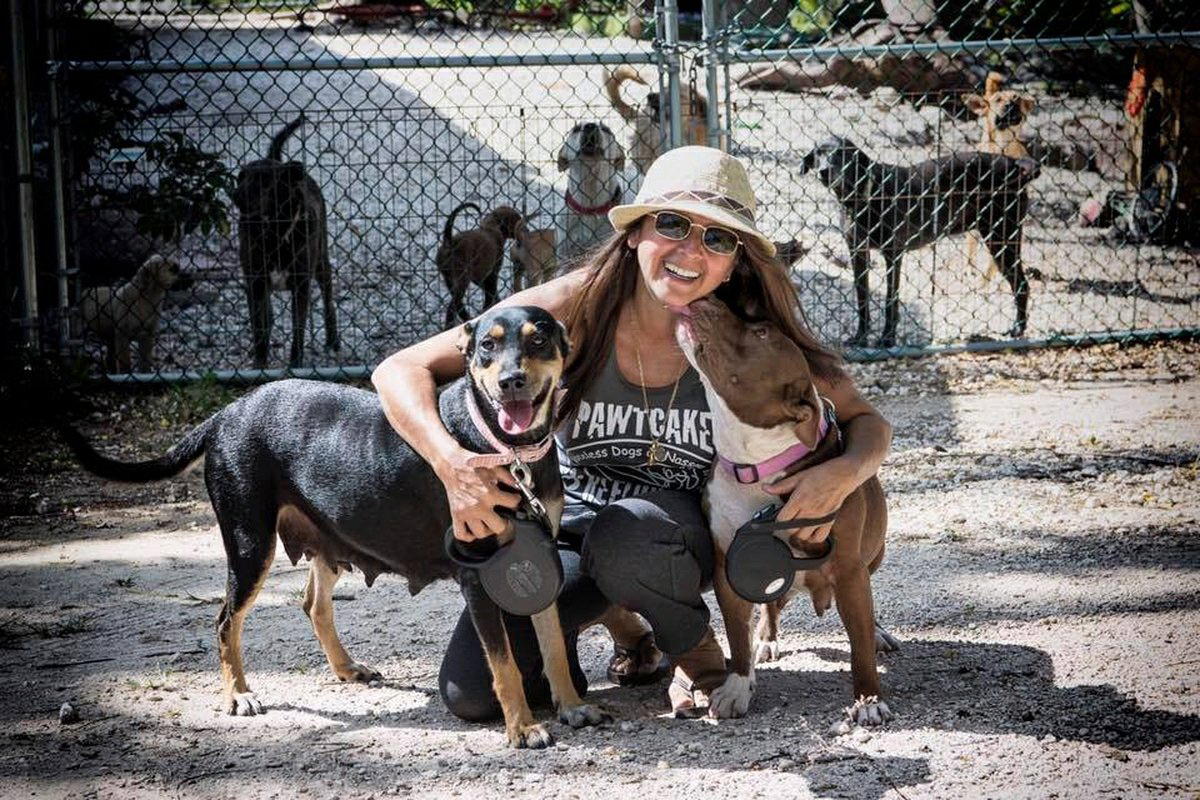
From a 9-year-old boy who wanted no kid to go hungry to a high-school coach who reached out to an armed student, here are TIME’s heroes of 2019.
Defenders of Notre Dame

As flames leaped from the roof of Notre Dame cathedral on April 15, those who knew its innermost secrets ventured into the pitch darkness of the smoke-filled nave. Their aim: to rescue some of the most valuable treasures in all of Christianity. “There was no electricity, there was a lot of water, there were alarms going off,” says Antoine-Marie Préaut, conservator of historic monuments in the Paris region, remembering the moment he entered the cathedral with Notre Dame’s operational director, Laurent Prades, and a group of firefighters. “The atmosphere was apocalyptic.”
Millions across the world watched aghast as fire shot from the medieval masterpiece in the heart of Paris. Less visible was how close Notre Dame came to total collapse, and how narrowly its treasures were saved.
About 400 firefighters battled the flames for more than nine hours—some climbing the staircase in its north tower, despite the danger of being trapped, to keep the cathedral’s set of 13-ton bells from falling and potentially bringing down the towers and the entire cathedral with them. The roof was already almost gone. “I found a situation that was completely catastrophic,” says Jérôme D., a firefighter who climbed to the top, and who cannot be named in full, per the rules of Paris’ fire brigade.
Préaut and Prades were so focused on rescuing the relics that they tuned out the chaos. Then they heard a giant noise as the spire crashed into the nave, collapsing the roof. Inside the cathedral, the fire now raged at ground level. “We felt utterly powerless,” Prades says. “But then everything happened very, very quickly. We lost all sense of time.”
Amid darkness and flames, the men fumbled to unlock a strongbox in a back chapel. Inside were Notre Dame’s most precious relics—including the Crown of Thorns that worshippers believe Christ wore to his Crucifixion, as well as pieces of wood and a nail believed to be from the True Cross. The two became part of a human chain, passing the priceless items to safety. “We told the firefighters, ‘Take everything you can carry,'” says Préaut, 38. “They were shouting at us, ‘Get out, get out!'”
Toward midnight, police finally escorted Préaut to city hall, where the relics were locked up for safekeeping. As their van crossed a bridge over the Seine, Préaut was stunned to see crowds jamming the entire area. “There were thousands and thousands of people just standing on the street silently, in shock,” he says. “I had the impression like it was the end of the world.”
Indeed, that night was the end of an era for a tight-knit group that had worked together for years at Notre Dame. As the months have gone by, the memory has weighed on Prades, 44, who has been at Notre Dame for more than 20 years. Préaut still has trouble sleeping. “There is a trauma from the event itself, from the hours that I spent in the cathedral,” Prades says. “There is also the trauma of knowing what might have happened.”
The two men are among a handful of people who have spent months working in trailers in the cathedral’s backyard, helping to prepare for the mammoth reconstruction ahead. The treasures and relics have been moved to a safe room within the Louvre Museum, and Notre Dame is wrapped in scaffolding and plastic. It will be shut perhaps until 2024, while its roof and spire are rebuilt. Until then, its ravaged state is a daily reminder of that terrifying night. “We would be happy to turn the page, to recover and go back to normal life,” Préaut says. When that time comes, the relics will go home, to their place of honor in a cathedral that, against the odds, still stands. —VW
A boy who helped change the law on school-lunch debt

Nine-year-old Ryan Kyote was eating breakfast at home in Napa, Calif., when he saw the news: an Indiana school had taken a 6-year-old’s meal when her lunch account didn’t have enough money. Kyote asked if that could happen to his friends. When his mom contacted the school district to find out, she learned that students at schools in their district had, all told, as much as $25,000 in lunch debt. Although the district says it never penalized students who owed, Kyote decided to use his saved allowance to pay off his grade’s debt, about $74—becoming the face of a movement to end lunch-money debt. When California Governor Gavin Newsom signed a bill in October that banned “lunch shaming,” or giving worse food to students with debt, he thanked Kyote for his “empathy and his courage” in raising awareness of the issue. “Heroes,” Kyote points out, “come in all ages.” —M. Carlisle
A one-man crew amid the flood

It was supposed to rain for only a few hours. When then 21-year-old Lamar University student Satchel Smith got to his job at Homewood Suites in Beaumont, Texas, on Sept. 18, he planned to leave promptly when his eight-hour shift was done; he had class in the morning. But the rain didn’t stop. By nightfall, Tropical Depression Imelda had flooded the highway. No one could reach—or leave—the hotel, and Smith was the only employee there to tend to the hotel’s roughly 90 guests.
According to the Texas Tribune, Imelda dropped up to 43 in. of rain in parts of southeast Texas and caused flooding that killed five people. But inside the hotel, Smith didn’t panic. He answered the phone as it rang all night. In the morning, people started looking for breakfast. Despite not knowing how to cook, Smith raided the kitchen and made sure everyone got a hot meal. The storm set off the fire alarm; he ushered tired guests out and back into the building.
Angela Chandler, an educator from Nacogdoches, Texas, was one of those guests. She had come to Beaumont for a business trip and was already nervous about being away from home. But as she watched Smith, she suddenly felt grateful. “Satchel was in and out of the kitchen, answering the phone, taking care of guests with a smile on his face,” she says. “And I looked at him and realized, ‘That baby is only a year older than my son.'” She was floored by his composure, and shared her observation on social media.
As the day ticked on, it became clear Smith would also have to cook dinner. By then the guests had started pitching in. Helping him cook and clean, they made chicken and pasta. A few people walked food and water out to truckers stranded on the highway. Someone brought out playing cards.
“We all came together. They made sure I was all right; I made sure that they were all right,” Smith recalls. Finally, another employee was able to get through the water in a monster truck to relieve him.
He had worked over 30 hours straight, and stayed awake the entire time.
Chandler’s post about Smith’s steadfastness quickly went viral. While he says it’s nice to be recognized, Smith adds, “I kind of feel like I was just doing my job.” —M. Carlisle
A bus driver who brought kids in from the cold

As temperatures fell below 20°F on Nov. 11, Nicole Chamberlain, a bus driver in Waukesha, Wis., peered through her windshield and saw two children wandering alone outside, headed toward a busy intersection. “They were upset, frazzled,” says Chamberlain, 44, who pulled her bus over and called out to them. When the children—a 2-year-old girl and her 6-year-old brother—came bounding over, Chamberlain realized neither was wearing a coat and the girl had on only a T-shirt and a diaper. “It was mind-blowing,” says Chamberlain, who was captured on the bus’s surveillance cameras wrapping her coat around the toddler’s bare legs. Chamberlain stayed with the children until police arrived, along with the children’s grandmother, who was babysitting when they darted out of the house. “It’s nice to have a feel-good story to share,” says Chamberlain. After a fellow driver tipped off a local news station to the story, strangers from all over the country agreed. “You saw something amiss and chose to step up to prevent a potential tragedy,” one wrote on her Facebook page. “I hope your example inspires others.” —M. Chan
A coach who embraced an armed student

When a distressed student appeared before him, armed with a shotgun, Keanon Lowe had no time to think. The football and track coach at Parkrose High School in Portland, Ore., lunged for the firearm, as students knocked over desks in panic. “It was a very surreal moment,” Lowe says, “all the kids screaming for their lives.” After a tug-of-war that seemed to last forever, Lowe, 27, wrestled the gun out of the student’s grasp. Then, in an unexpected move, he pulled the student in for a hug. “I didn’t see an evil kid,” Lowe says. “I saw a kid that was going through a lot.”
The student, identified by authorities as 19-year-old Angel Granados-Diaz, had been suicidal for several months, according to prosecutors, when he took the loaded and legally bought shotgun to school on May 17. Before Lowe intervened, the teen had already tried killing himself outside a bathroom, but the shotgun did not discharge. “What he needed was a shoulder to cry on and someone to hug him,” says Lowe, who has been coaching and serving as the school’s security guard for the past two years. “I don’t know the last time he got a hug.” While Granados-Diaz resisted the embrace at first and tried shoving Lowe away, the coach’s comforting words soon softened him. “I told him that I cared about him and that I was there for him and I was there to save him,” Lowe says. “He was surprised that I had said that. He said, ‘You do?’ and looked me right in my face. I said, ‘Yes, I do.’ He gave in to the hug, and that made a huge difference.”
Lowe and Granados-Diaz were strangers until then, but they held their embrace for at least 20 seconds, as Lowe passed the shotgun to another teacher. The moment, captured by a security camera, moved tens of thousands of people who saw it on social media. “No one would have batted an eye if he responded more aggressively,” says the school’s principal, Molly Ouche. “But he had compassion.”
For his bravery and kindness, Lowe was awarded a civilian medal of heroism from Portland’s police chief, and the city’s mayor declared May 29 to be “Coach Keanon Lowe Day of Recognition.” The accolades have been humbling and overwhelming, says Lowe, who played football at the University of Oregon. But he’s ready to move on, mostly so Granados-Diaz can do the same. On Oct. 10, Granados-Diaz pleaded guilty to having a loaded firearm in public and was sentenced to 36 months of formal probation, which includes mental-health treatment. According to prosecutors, his gun was loaded with only one round, meant for himself. It was evident that day that the student was “fighting demons,” Lowe says.
“This was just one moment in my life that’s not going to define me,” he adds. “And it’s not going to define Angel as well.” —M. Chan
A woman who kept dozens of dogs safe during Hurricane Dorian

Chella Phillips has lived in the Bahamas since 2004, and she knows what a storm can do. When Hurricane Dorian barreled toward her home, she got to work. Phillips has run Nassau’s Pawtcake Refuge, which cares for homeless dogs, out of her home since 2015. She had 82 dogs there already but searched out more. By the time Dorian arrived, she was hunkering down in her three-bedroom house with 97 dogs, and she dashed off a quick Facebook post about the mayhem. Then she lost power. It was only after Phillips emerged that she learned her post had gone viral. Nassau was largely spared, but the storm devastated the Abaco Islands and Grand Bahama, killing scores of people and leaving many with a sense of hopelessness. Her story had become a bit of positive news to hang onto, drawing thousands of messages from around the world. “I [said], ‘Why are people so impressed about this?’” she says. “Anybody who cares about these animals would have done that.” Still, she’s grateful for the extra attention on the dogs: in the week after Dorian, Phillips sent 68 to homes or rescue groups in the U.S. —M. Carlisle
This article is part of TIME’s 2019 Person of the Year package. Read more from the issue and sign up for the Inside TIME newsletter to be the first to see our cover every week.
More Must-Reads from TIME
- How the Economy is Doing in the Swing States
- Harris Battles For the Bro Vote
- Our Guide to Voting in the 2024 Election
- Mel Robbins Will Make You Do It
- Why Vinegar Is So Good for You
- You Don’t Have to Dread the End of Daylight Saving
- The 20 Best Halloween TV Episodes of All Time
- Meet TIME's Newest Class of Next Generation Leaders
Write to Madeleine Carlisle at madeleine.carlisle@time.com